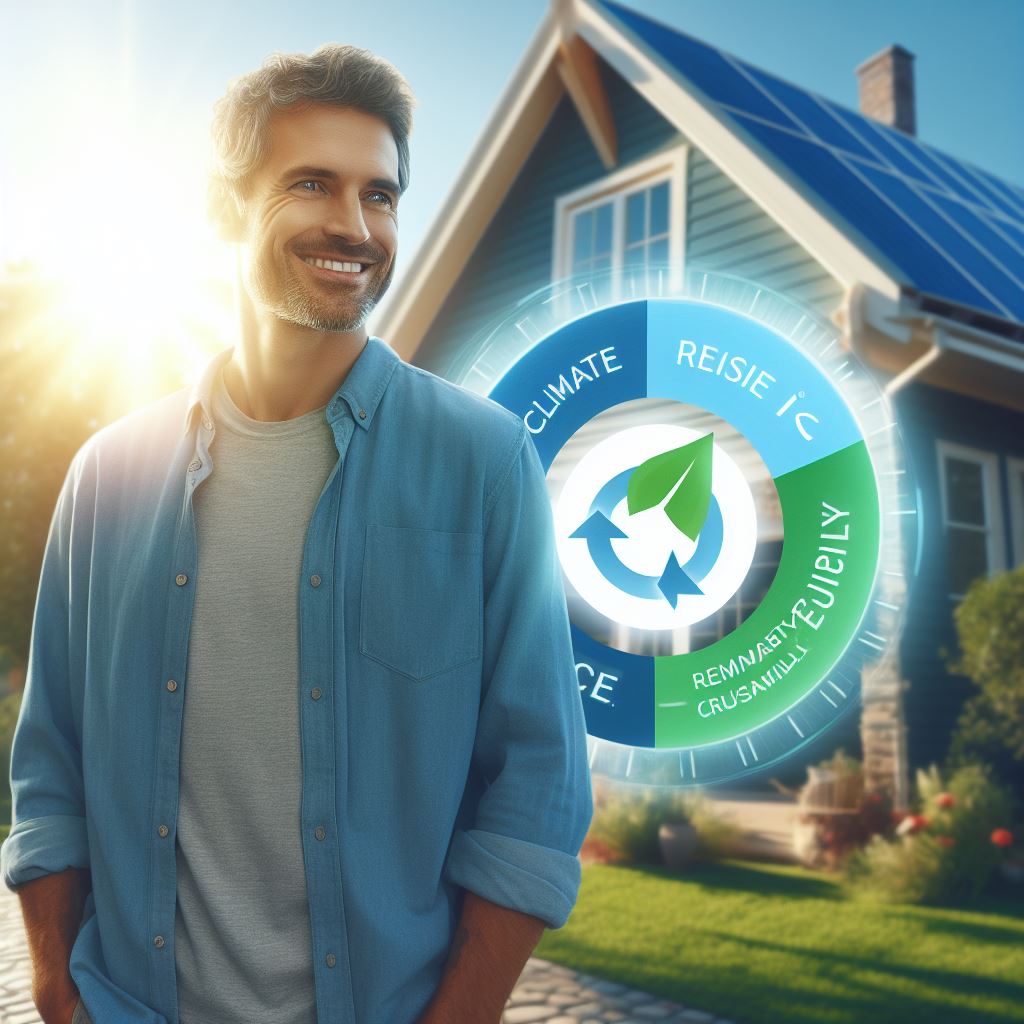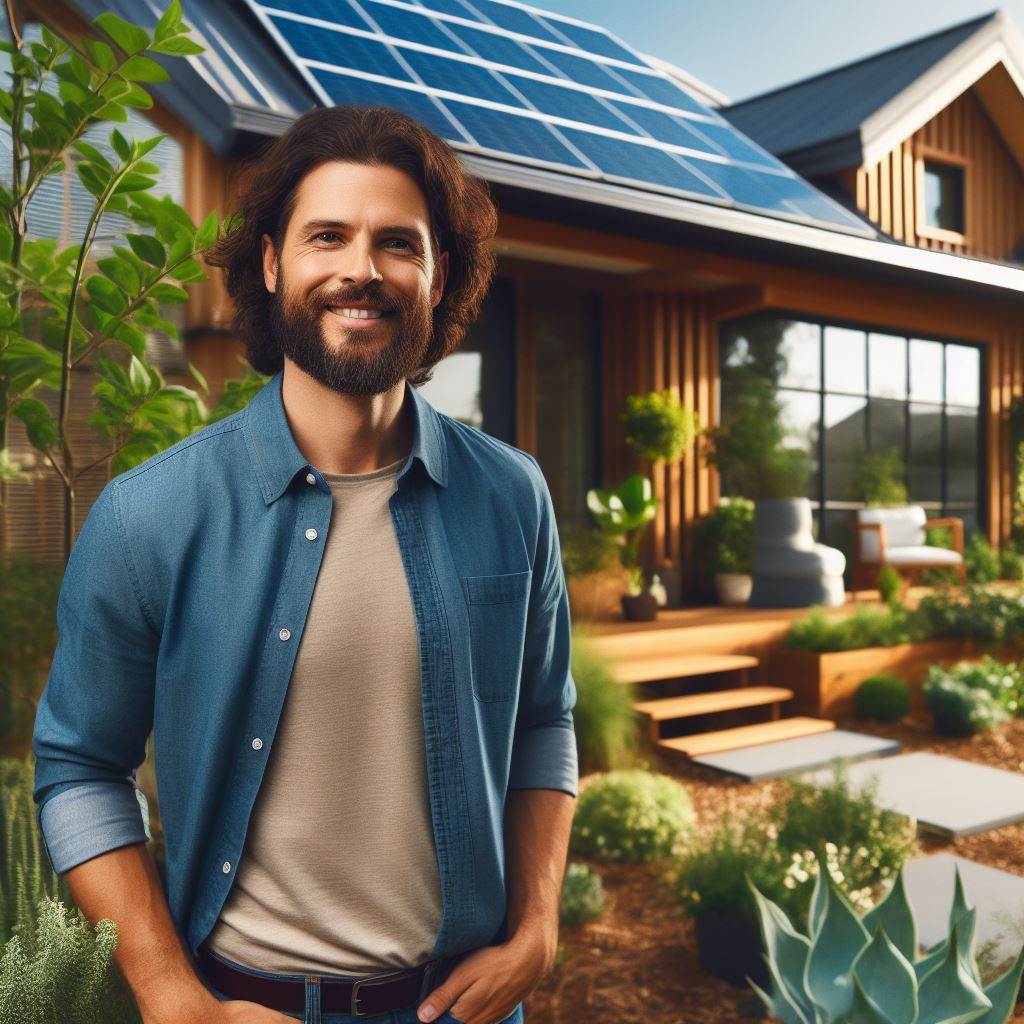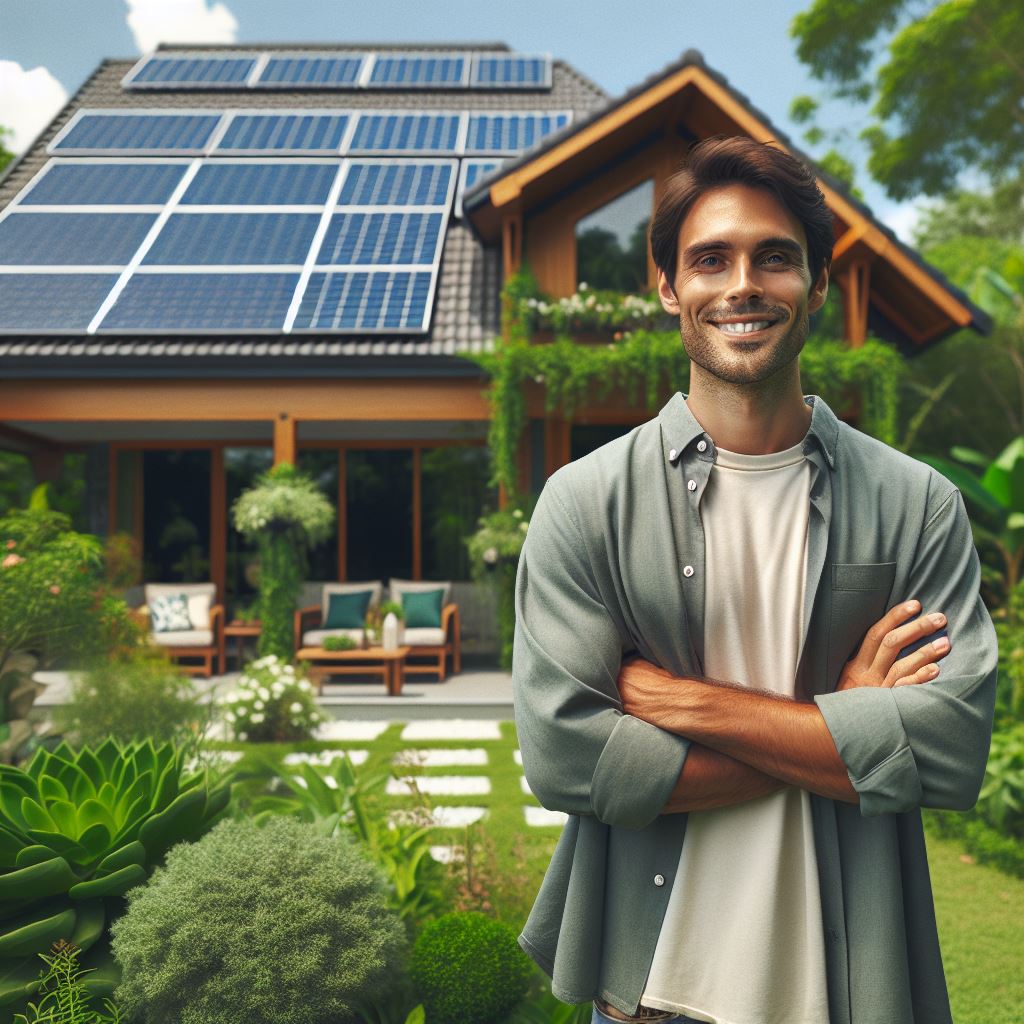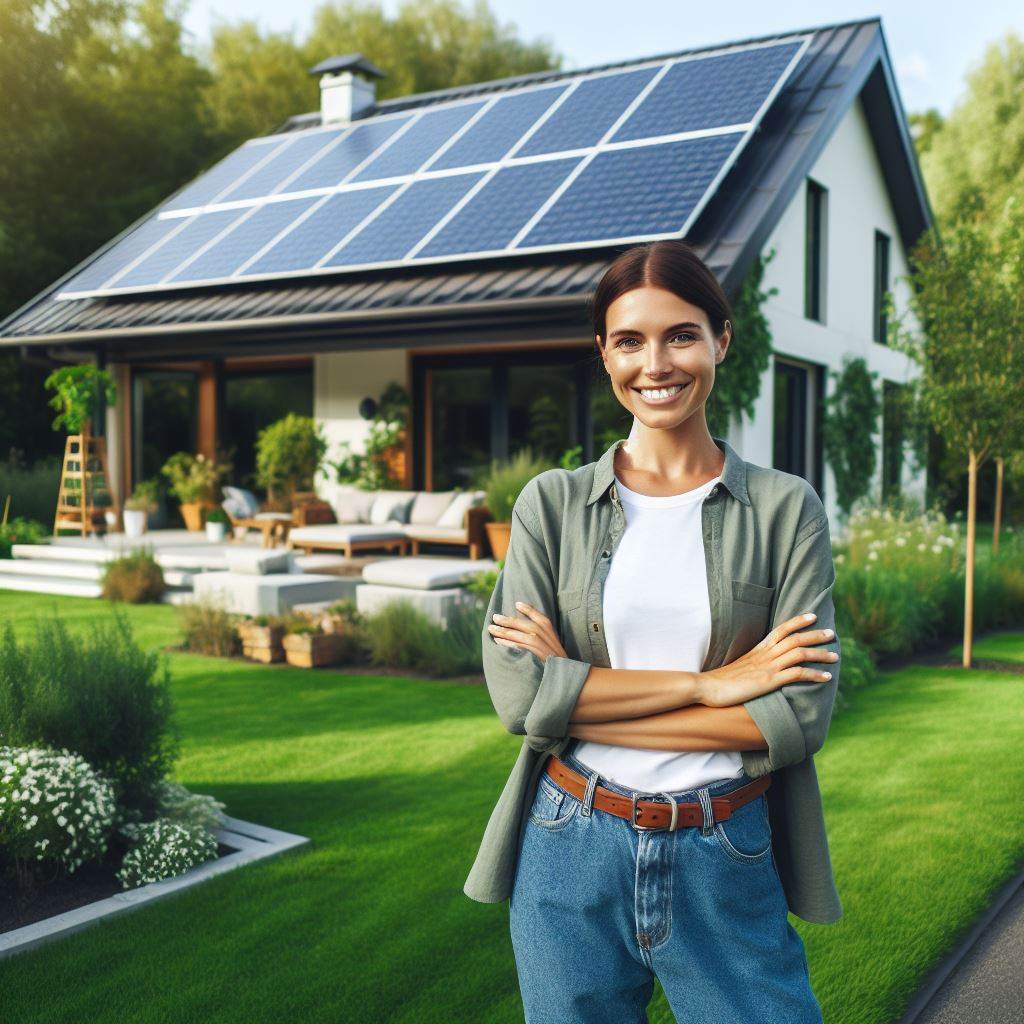Introduction
The burgeoning concept of climate-ready homes is a pivotal force in the dynamic landscape of the US market.
These homes, designed to withstand and adapt to the challenges posed by climate change, are reshaping the real estate paradigm.
In the ever-evolving realm of real estate, heightened climate change awareness holds unprecedented importance.
Buyers are no longer solely driven by aesthetic and functional features; sustainability and resilience have become paramount considerations in their quest for an ideal home.
As the repercussions of climate change become increasingly palpable, there is a collective shift towards environmentally conscious living.
The overarching objective of this blog post is to delve into the multifaceted realm of climate-ready homes within the US market.
Beyond mere structures, these homes embody a forward-looking ethos, seamlessly blending innovation and environmental responsibility.
Unraveling the layers of their significance, we aim to provide a comprehensive understanding of how climate-ready homes are emerging as a cornerstone in the real estate landscape.
From cutting-edge technologies to sustainable design practices, this exploration aims to shed light on the transformative power these homes hold, propelling the housing market towards a greener and more resilient future.
Understanding the US Market
Overview of the Current State of the US Real Estate Market
The US real estate market is currently experiencing steady growth and high demand.
Home prices have been steadily increasing, making it a sellers’ market.
The market is characterized by low inventory, with limited housing supply compared to high demand.
The housing market varies regionally, with some areas experiencing more significant growth than others.
Factors Influencing the Market
- Interest rates play a significant role in determining the state of the real estate market.
- Low-interest rates encourage borrowing and stimulate the housing market by making mortgages more affordable.
- On the other hand, higher interest rates make borrowing more expensive, which can slow down the market.
- Economic conditions, such as employment rates and job growth, also impact the real estate market.
- A robust economy creates more opportunities for people to buy homes and invest in real estate.
Increasing Focus on Sustainability and Climate Resilience
- The real estate industry is experiencing a growing emphasis on sustainability and climate resilience.
- With the increasing threat of climate change, homebuyers are now considering environmental factors in their purchasing decisions.
- Builders and developers are responding to this demand by constructing climate-ready homes.
- Climate-ready homes are designed to withstand extreme weather events and minimize environmental impact.
- These homes often incorporate energy-efficient features, renewable energy systems, and sustainable building materials.
- Investing in a climate-ready home not only reduces environmental impact but also provides long-term cost savings for homeowners.
- Furthermore, sustainable homes are more attractive to potential buyers and can fetch higher resale values.
- The focus on sustainability and climate resilience is likely to continue growing as the effects of climate change become more prevalent.
- Policymakers and organizations are also pushing for stricter building codes and regulations to promote sustainable practices.
Read: Aging in Place: US Construction Trends
Climate Change Impacts on Homes
Potential threats posed by climate change to residential properties
- Extreme weather events caused by climate change can pose significant threats to residential properties.
- Rising temperatures can lead to increased heatwaves, which can strain or damage homes and infrastructure.
- Increased precipitation and storms can lead to flooding, putting homes at risk of water damage.
- Sea-level rise presents a major threat to coastal communities, causing erosion and potential loss of homes.
- Changing climate patterns can also result in more frequent and severe droughts, impacting homes that rely on water sources.
Varying regional impacts, such as hurricanes, wildfires, and sea-level rise
- Coastal regions are particularly vulnerable to the impacts of climate change, including hurricanes and sea-level rise.
- Stronger hurricanes driven by warmer ocean temperatures can cause significant property damage.
- Wildfires are becoming more intense and frequent, posing risks to homes in regions prone to wildfires.
- Sea-level rise, caused by melting ice caps and thermal expansion, threatens coastal properties worldwide.
- Low-lying areas are at higher risk of flooding and erosion due to sea-level rise.
Risks associated with property damage, insurance costs, and long-term value
- Property damage from climate change impacts can result in costly repairs or even the complete loss of a home.
- Insurance costs for homeowners in high-risk areas may increase due to the growing threat of climate-related damages.
- Climate change impacts can decrease the long-term value of properties, affecting homeowners’ investment returns.
- Homes at higher risk of climate-related damages may become less desirable to buyers, impacting their marketability.
- Investing in climate-ready homes can mitigate some risks and preserve property values in the face of climate change.
In essence, climate change poses significant threats to residential properties in various regions of the United States.
Extreme weather events, rising temperatures, and sea-level rise all contribute to the potential damages homes may face.
Homeowners must be aware of these risks and take measures to protect their properties and investments.
Additionally, policymakers and insurance providers need to recognize the increasing threat of climate change and develop strategies to mitigate its impacts on homes and communities.
Definition of Climate-Ready Homes
The concept of climate-ready homes and their key characteristics
A climate-ready home refers to a residential property that is built and designed to withstand and adapt to the impacts of climate change.
These homes focus on reducing vulnerabilities and increasing resilience, ensuring that occupants remain safe and comfortable in a changing climate.
Key characteristics of climate-ready homes include enhanced insulation, efficient heating and cooling systems, and the use of sustainable materials.
These homes incorporate smart technologies that monitor and regulate energy usage, allowing homeowners to minimize their environmental footprint and reduce utility bills.
Importance of energy efficiency, water management, and renewable resources
Energy efficiency is a crucial aspect of climate-ready homes.
These properties are designed to minimize energy consumption and maximize efficiency through improved insulation, energy-efficient appliances, and smart energy management systems.
By reducing energy usage, climate-ready homes lower greenhouse gas emissions and contribute to a more sustainable future.
Water management is another essential feature of climate-ready homes.
These properties incorporate water-saving fixtures, such as low-flow toilets and showerheads, and rainwater harvesting systems.
Efficient water management helps conserve water resources and adapt to potential water scarcity or increased precipitation due to climate change.
Furthermore, climate-ready homes prioritize the utilization of renewable resources.
They integrate renewable energy systems like solar panels or wind turbines to generate clean and sustainable energy.
Investing in renewable resources not only reduces dependence on fossil fuels but also contributes to a greener and more resilient energy infrastructure.
Integration of climate adaptation and mitigation strategies in house design
Climate adaptation and mitigation strategies are essential components of climate-ready home design.
Adaptation measures focus on preparing homes to withstand climate-related disasters and changing weather patterns.
This involves incorporating features like flood-proofing, elevated foundations, and storm-resistant windows and doors, ensuring homes are better prepared for extreme weather events.
Mitigation strategies aim to reduce greenhouse gas emissions and slow down the progression of climate change.
Climate-ready homes integrate various mitigation measures, such as energy-efficient appliances, renewable energy systems, and sustainable construction materials.
These strategies help decrease the environmental impact of homes and contribute to global efforts in mitigating climate change.
By integrating both adaptation and mitigation strategies, climate-ready homes provide a holistic approach to addressing climate change impacts.
They not only protect occupants from the immediate risks associated with a changing climate but also contribute to long-term sustainability and resilience.
Climate-ready homes play a vital role in the overall transition towards a low-carbon future.
In fact, climate-ready homes are designed to withstand and adapt to the impacts of climate change.
They prioritize energy efficiency, water management, and the integration of renewable resources.
By incorporating climate adaptation and mitigation strategies, these homes contribute to a more sustainable and resilient future.
Investing in climate-ready homes is not only beneficial for homeowners but also for the environment and the global efforts against climate change.
Read: US Housing: From Urban to Suburban Shift
Advantages of Climate-Ready Homes
Benefits of investing in climate-ready homes for homeowners
- Increased resilience to extreme weather events like hurricanes, floods, and wildfires.
- Enhanced comfort and indoor air quality due to improved insulation and ventilation systems.
- Higher energy efficiency resulting in lower utility bills and reduced carbon emissions.
- Protection of property value and assets from climate-related damages.
- Promotes health and well-being by reducing exposure to pollutants and allergens.
- Provides peace of mind knowing that the home is designed to withstand climate challenges.
- Minimizes repairs and maintenance costs associated with climate-related damages.
- Supports sustainable living practices by conserving natural resources and reducing environmental impact.
- Qualifies for green certifications, such as LEED or ENERGY STAR, which can increase market desirability.
- Increases the potential for a higher return on investment when selling the property.
Potential savings in energy costs and insurance premiums
- Climate-ready homes typically consume less energy for heating and cooling, leading to lower utility bills.
- Energy-efficient features, such as solar panels and smart thermostats, can further reduce energy expenses.
- Insurance companies often offer discounts on premiums for homes equipped with climate-resilient features.
- Reduced risk of damage from extreme weather events means fewer insurance claims and potential premium savings.
Increased market demand and potential for higher resale value
- Climate change awareness is growing, driving an increasing demand for climate-ready homes.
- Potential buyers recognize the value and importance of investing in a resilient and sustainable property.
- Climate-ready homes often stand out in the market, attracting more interest and potential buyers.
- Homes designed with climate resilience in mind are likely to appreciate in value over time.
- In regions prone to climate-related damages, buyers are willing to pay a premium for these properties.
- Real estate listings emphasizing climate resilience can differentiate a property from the competition.
- Climate-ready homes may attract environmentally-conscious buyers, further fueling market demand.
With the numerous benefits offered by climate-ready homes, homeowners can enjoy increased resilience, lower energy costs, potential savings in insurance premiums, and greater market demand.
Investing in a climate-ready home not only safeguards against the impacts of climate change but also provides financial and environmental advantages.
By embracing climate-resilient features, homeowners contribute to a sustainable future while ensuring their own well-being and the value of their investment.
Read: Adaptive Reuse: Real Estate’s New Era

Innovative Technologies for Climate-Ready Homes
Emerging technologies and features available for climate resilience
Climate change has led to the development of innovative technologies for climate-ready homes.
These technologies aim to increase the resilience of homes against extreme weather events.
One such technology is the use of advanced insulation materials that provide better thermal performance.
Smart windows are another emerging technology that can minimize energy loss while maximizing natural light.
Climate-responsive ventilation systems can help regulate indoor air quality and temperature based on weather conditions.
Additionally, integrated sensors and monitoring systems allow homeowners to track and adjust energy usage in real-time.
These technologies not only improve the comfort and durability of homes but also reduce energy consumption and greenhouse gas emissions.
The use of smart home systems, solar panels, and energy storage solutions
Smart home systems enable homeowners to control and automate various aspects of their homes.
These systems can optimize energy usage by adjusting heating and cooling based on occupancy and weather.
Solar panels are an increasingly popular choice for sustainable energy generation in climate-ready homes.
They harness the power of the sun to generate clean, renewable electricity, reducing dependence on the grid.
Furthermore, energy storage solutions, such as batteries, allow homeowners to store excess energy for later use.
This ensures a continuous power supply even during power outages or when solar energy production is low.
Together, these technologies create more energy-efficient homes that are better equipped to handle climate challenges.
Incorporation of sustainable materials and construction practices
Climate-ready homes prioritize the use of sustainable materials that have a lower environmental impact.
These materials include reclaimed wood, recycled glass, and environmentally friendly insulation.
Green roofs and vertical gardens are additional features that contribute to climate resilience and biodiversity.
Construction practices, such as modular construction and prefabrication, minimize waste and reduce construction time.
Moreover, designing homes to be adaptable and flexible allows them to withstand changing climate conditions.
By integrating sustainable materials and construction practices, climate-ready homes can mitigate their environmental footprint.
Additionally, these practices promote resource efficiency and a circular economy in the construction industry.
In short, innovative technologies play a crucial role in building climate-ready homes.
These technologies enhance resilience against climate change, improve energy efficiency, and reduce greenhouse gas emissions.
The use of smart home systems, solar panels, and energy storage solutions allows homeowners to have more control over their energy usage and ensures a continuous power supply.
Incorporating sustainable materials and construction practices further reduces the environmental impact of homes.
By embracing these innovative technologies and practices, the US market can progress towards a more sustainable and climate-resilient future.
Read: Historic Preservation in Modern US Homes
Government Incentives and Programs
Role of government initiatives in promoting climate-ready homes
The US government plays a crucial role in promoting climate-ready homes by implementing various initiatives and programs.
These efforts aim to encourage homeowners and builders to adopt sustainable and energy-efficient practices.
One of the primary ways the government promotes climate-ready homes is through tax credits.
These financial incentives provide homeowners with significant savings when they utilize renewable energy sources or invest in energy-efficient upgrades.
For example, the Residential Energy Efficiency Property Credit offers a 30% tax credit to homeowners who install solar panels, wind turbines, geothermal heat pumps, or fuel cells.
This incentive not only encourages the use of renewable energy but also reduces reliance on traditional fossil fuels.
In addition to tax credits, grants are another tool the government uses to promote energy-efficient upgrades.
Grants provide financial assistance to homeowners who want to make their homes more climate-ready but may not have the funds to do so.
For instance, the Weatherization Assistance Program (WAP) offers grants to low-income households to improve their energy efficiency.
This enables homeowners to reduce their energy consumption and ultimately save on utility bills.
Furthermore, subsidies are available to support energy-efficient upgrades.
These subsidies help offset the initial costs associated with purchasing energy-efficient appliances or making environmentally friendly home improvements.
Programs supporting resilient communities and disaster mitigation
The US government also supports programs that foster resilient communities and disaster mitigation.
These initiatives aim to enhance the resilience of homes and ensure their readiness for climate-related hazards.
For example, the Community Development Block Grant-Disaster Recovery program provides funding to states and local governments for disaster recovery and mitigation.
This program helps communities rebuild in a sustainable and climate-ready manner after experiencing natural disasters.
Another important program is the National Flood Insurance Program (NFIP), which provides flood insurance to homeowners in flood-prone areas.
By offering insurance coverage, the government encourages homeowners to take proactive measures to protect their homes from flooding and other climate-related risks.
In review, government incentives and programs play a vital role in promoting climate-ready homes in the US.
Tax credits, grants, and subsidies help homeowners invest in energy-efficient upgrades, while programs supporting resilient communities and disaster mitigation ensure homes are prepared for climate-related challenges.
With these initiatives, the government aims to create a more sustainable and resilient future for homeowners across the country.
Real Estate Agents and Climate Readiness
Role of real estate agents in promoting climate-ready homes
Real estate agents play a crucial role in promoting climate-ready homes to buyers and sellers.
They can educate their clients about the importance of climate resilience in the housing market.
Agents can highlight the benefits of climate-ready homes, such as energy efficiency and lower maintenance costs.
By showcasing climate-ready features, agents can attract environmentally conscious buyers.
Real estate agents can also collaborate with builders and developers to encourage the construction of climate-ready homes.
By actively promoting climate-ready homes, agents contribute to a sustainable and resilient housing market.
Importance of agent education and awareness on climate change impacts
Real estate agents need to be educated about the impacts of climate change on the housing market.
Understanding these impacts allows agents to effectively advocate for climate-ready homes.
They need to be aware of changing weather patterns, sea-level rise, and extreme weather events.
This knowledge helps agents guide their clients towards homes that are better equipped to withstand climate-related risks.
Agents should stay updated on local and national climate change initiatives and regulations.
Being aware of policy changes can help agents accurately assess the value and future prospects of properties.
Tips for buyers and sellers to evaluate and prioritize climate resilience in their transactions
- Buyers should consider the location of a property and its vulnerability to climate-related hazards.
- They should assess the home’s insulation, energy efficiency, and use of renewable energy sources.
- Buyers can request information about the property’s flood history and any previous weather-related damages.
- Sellers should highlight any climate-ready features, such as storm shutters, reinforced roofs, or flood-resistant materials.
- Both buyers and sellers should consult with experts, such as building inspectors or climate resilience consultants.
- These professionals can provide valuable insights into the climate readiness of a property.
In a nutshell, real estate agents play a vital role in promoting climate-ready homes and educating clients about the importance of climate resilience.
Agents can attract environmentally conscious buyers by showcasing the benefits of climate-ready features and collaborating with builders and developers.
It is crucial for agents to be educated and aware of the impacts of climate change on the housing market to effectively advocate for climate-ready homes.
Buyers and sellers can prioritize climate resilience by considering the location, assessing energy efficiency measures, and consulting with experts.
By evaluating and prioritizing climate resilience in real estate transactions, individuals contribute to a more sustainable and resilient housing market.
Conclusion
To encapsulate our discussion, emphasizing climate readiness emerges as a paramount necessity for fortifying the robustness of the US real estate market against the escalating threats posed by climate change.
BThe looming specter of climate change imposes an increasingly menacing shadow upon the landscape of the US real estate market.
From rising sea levels to extreme weather events, the sector faces a barrage of challenges that demand proactive solutions.
By accentuating the significance of climate readiness, we underscore the pivotal role it plays in mitigating risks, safeguarding assets, and ensuring sustainability in the face of an ever-changing climate.
As our discourse culminates, it is imperative to impress upon our readers the transformative potential of viewing climate-ready homes not merely as a passing trend but as an astute and farsighted investment strategy.
In navigating the intricacies of the real estate market, individuals stand to benefit not only from the immediate advantages of climate resilience but also from the long-term gains inherent in securing properties that align with a sustainable and environmentally conscious ethos.
The call to action resonates strongly: consider climate-ready homes not just as a current need but as a lasting testament to a judicious and forward-thinking investment, positioning individuals for enduring success amidst the uncertainties of our evolving climate.




